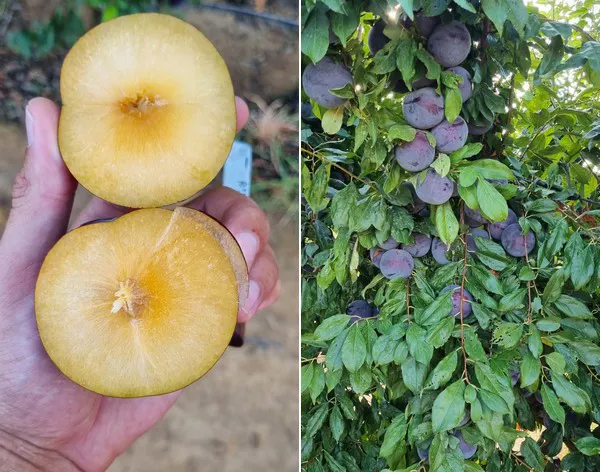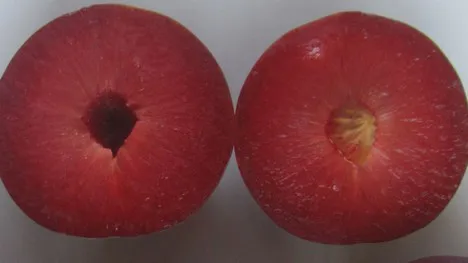Spain is the leading European producer of stone fruit and the undisputed leader in its export worldwide, although its supply has been reduced for 3 consecutive seasons due to the impact of frost and hail, which are linked to climate change. Profitability issues are becoming a bigger problem as production costs increase and adverse weather conditions continue to take a toll. This and the market demand for tasty fruit is making it advisable to review the structure of the production at the varietal level, as well as the marketing. It is also the case for plums.
According to Europech data, after a 2021 campaign with the lowest stone fruit production on record in all European countries, in 2022 there will be a generalized recovery, with the exception of Spain. For the second consecutive year, spring frosts have caused significant losses in stone fruit, in this case in Spain. While last year Italy and Greece estimated declines of between 35% and 50%, this year they report a recovery of 41% and 64%, respectively, thereby approaching average production values. France, in addition to recovering by 47%, is also 2% above the average. Spain, with a crop of around 1.15 million tons, is the country most affected by frost and is experiencing a 31% drop in the production compared to 2021, when it was also lower than in 2020 and 42% below average.

"Climate change is taking a negative toll on the agricultural sector in general, including stone fruit. In recent years, it has caused adversities that have significantly decimated the productions," says Luis Aliseda, director of the R & D center of the Extremadura breeder Viveros Provedo.
"Winters now tend to be warmer and springs colder than usual, with frost occurring later and later in recent seasons. This year we have suffered production losses in the north of the Iberian Peninsula, in Catalonia and Aragon. In Extremadura, no crop has been lost due to frost, but there are increasingly strong heat waves and late rains, as climate change exacerbates the extremes. That is why the sector requires a more widespread implementation of technical methods to combat these adversities, such as anti-freeze systems or anti-hail protection meshes, but I think it is very important to make use of the genetic means for crop adaptation at our disposal."
The Extremadura company has been working for about 15 years on materials adapted to the on-going changes in the climate. "Until now, all the materials selected were for early flowering, since we were mainly looking for early varieties. In recent years, we have escaped this trend and we've been working on a group of varieties that offer a combination of low cold requirements and very late blooms. This ensures that the varieties will be productive in winter, regardless of the conditions, and will be less at risk when flowering a few weeks later," says Luis Aliseda. "We have already introduced three nectarine varieties with these characteristics and four red peaches, and we hope to continue moving forward in this path."
"Flavor is becoming a determining factor in the consumption of stone fruit"
"Stone fruit needs to recover its flavor. Many products have lost it because their productivity has increased exponentially. A season with a lack of fruit and low demand is showing us the very serious problems we will encounter when the production reaches its full potential. Consumption is clearly flavor-driven. This year we have seen how consumers have preferred other products when ours did not taste good," said Luis Aliseda.
Out of all the structural problems in the stone fruit sector, with its wide range of varieties of different species available, many of which do not meet the expectations of consumers, producers and distributors, the case of plums stands out the most, as they have been unprofitable for more than four years. In fact, this led to more than 2,000 hectares being uprooted at the end of the 2019 campaign, and since then there has continued to be a downward trend. This year, sales have again stalled quite a bit during the month of July, as although old plantations have been uprooted in recent years, there still seems to be a 'surplus' of plums in the first phase of the campaign due to their poor quality in terms of flavor.
"It should be kept in mind that plums compete with melons and watermelons, as well as other stone fruit species, in the summer produce range. If consumers buy them and are not pleased, they won't repeat their purchases, but look for alternatives. This has led to a significant loss of market share in recent years," said Luis Aliseda.

In addition to the fact that there is still an abundance of varieties with little flavor in the market, another of the main causes of plums losing value is the premature harvesting of the fruit, demanded by the market itself.
"It is a recurring problem that, unfortunately, has continued to be observed in recent years, and has been exacerbated this year by the overall shortage of stone fruit in the country. So fruit with no commercial outlet, because it has been rejected, has been left in the chambers. It is difficult for a producer to say 'no' when the market demands the product and prices are attractive, since throughout the campaign there is no security or stability in the market. But then the market stops purchasing, because a lot of bad tasting fruit has accumulated in the chambers and it becomes difficult to sell it," says the expert.
"We have to be ready. It may seem difficult, but it is extremely simple. The market rules are quite primary; basically, all parties involved want to make some form of profit. Growers want more kilos, supermarkets don't want to throw fruit away and want it to have as long a shelf life as possible, and consumers want tasty fruit," saud Luis Aliseda.
"What have we done as breeders? We have developed materials with more vigor, maintaining the sugar levels of the more flavorful traditional varieties, but achieving greater commercial resilience. Similar work has been done with grapes, melon and watermelon, for example, as well as with other products. We have just finished with a series of highly tasty plum varieties, with minimum sugar levels of 17 degrees Brix, strongly aromatic and harvested from the end of June to the end of September, with a gap in the harvesting calendar of one or two weeks between each variety. They are mainly red-fleshed varieties, although there are also some yellow-fleshed varieties. When the variety offers an extraordinary flavor, the color of the flesh does no longer matter that much," he says.
"Varieties such as the Black Splendor have even caused the market to collapse due to a lack of flavor and because they are harvested earlier than they should have been because the prices were attractive, so when they have reached the market they have been rejected, while other good quality products have been sold like hotcakes. Plums are very sour when harvested unripe. Taking grower behavior into account, we have obtained some new plum varieties that will be juicy even when they are harvested a little earlier than they should be, so the market would find them edible.
"We have assumed that it is difficult to change the behavior of producers and the market, so we are adapting through genetics. What we are trying to do is to increase the consumption of stone fruit. The issue of prices is another matter. Either we get consumption to increase, or when the expected production comes, we will have a problem. We want to bring plum consumption to the same levels as those of table grape or melon while ensuring a safe purchasing experience for consumers."

According to Luis Aliseda, it is normal for growers to be skeptical, because they are not sure whether the tasty fruit will be as productive and they need minimum yields. "Now they have to test these new materials to see that, in addition to being productive, they offer flavor. We hope that the market will continue to develop and changes will begin to be noticed in the coming seasons."
The expert also says that: "This year, all breeders and nurseries expected higher nectarine sales, as we have put a lot of effort into this species, which has hairless peel and is more palatable. However, this year there has been a stronger preference for peaches. Since it has hair, it perspires in a different way. It is more porous and, therefore, more aromatic and organoleptically superior to nectarines. The market is clearly looking for flavor and there are clear causes for concern, since there is an oversupply of nectarines in a sea of fruit where there are tasty fruits next to unripe or sour ones, so their price has been balancing out with that of peaches."
Differentiation will continue to be a challenge in the stone fruit market. "Although tasty varieties are being introduced, it is difficult, for now, to achieve differentiation in the stone fruit market. The market is not making any differentiation, but rather gobbling everything up and filling up the shelves. It will continue to be a challenge to differentiate tasty fruit from non-tasty one. Our Extreme® line offers opportunities in this regard. All the tasty varieties are Extreme®, a brand that aims to be permanently linked to differentiation," said Luis Aliseda.
 For more information:
For more information:
Luis Aliseda
VIVEROS PROVEDO, S.A.
M: + 34 629 237 883
aliseda@provedo.com
www.extremebyprovedo.com
www.provedo.com
